
About Nudity and Pornography
Pastor Frank Senn originally posted these responses to questions he received on his website Frank Answers. In my opinion, he offers some of the most balanced answers to real-life questions.
From His Site:
This article was posted on the old blog during the pandemic (on 12/27/2020). I thought it was an interesting question and topic that is worth retrieving with some amendments and different images.
Question:
Hi, Pastor Frank! I’m curious if you have any thoughts on how men should navigate the somewhat blurred lines between nudity and pornography in the contemporary era. I’ve occasionally worked as a nude model for life drawing classes over the past few years, which seems pretty clearly nonsexual to me. In contrast, I don’t think I could justify being a stripper (even though I find films like Magic Mike interesting) because it seems too overtly sexual. But it seems like there are an increasing number of situations where the boundaries between nudity and sexuality are more blurred. For example, paint studios like The Artful Bachelorette allow women to hire a nude male drawing model instead of a stripper and I’m not sure how I feel working for a company like that. How/where do we draw the line?
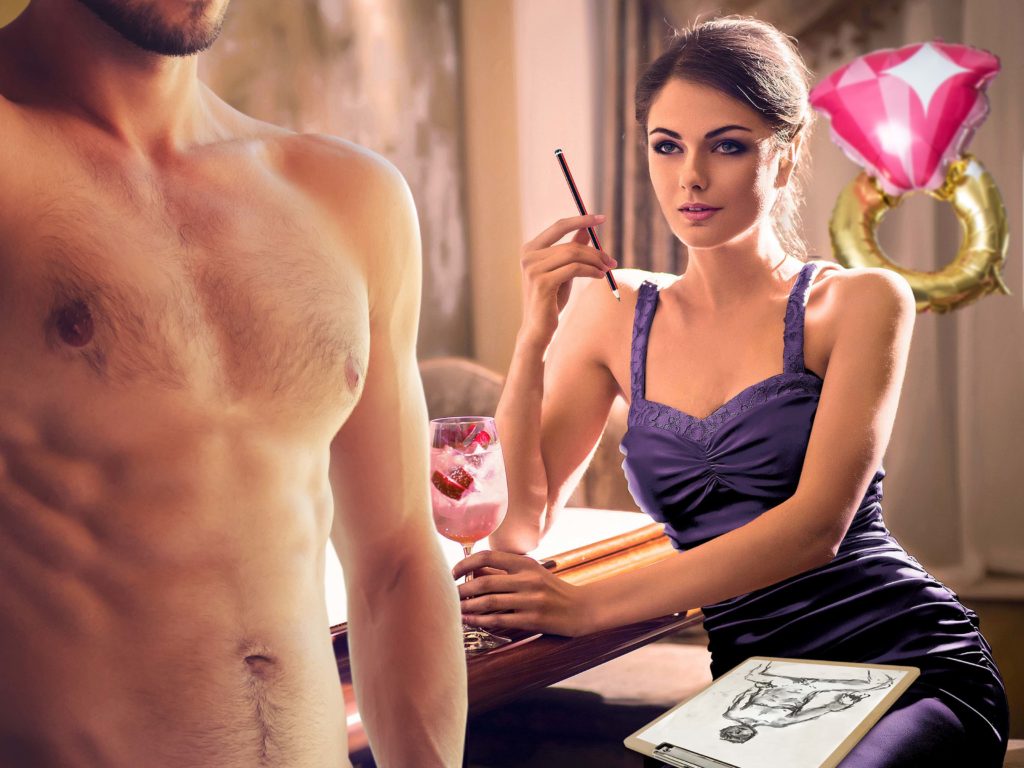
Frank answers: I’m kind of flying in the dark on this one. I’ve never been a life model or attempted to draw one. I haven’t heard of the Artful Bachelorette and certainly have never been to a bachelorette party. But the question of the fine line between nudity and pornography is one I’ve treaded in my own blog as I’ve looked for images to illustrate themes dealing with the body.
I think when it comes to live situations, the nude body is what God created; we humans created clothing and we create art. The body should be treated with honor and respect. We are also endowed by our Creator with sexuality, and that too should be treated with honor and respect. I think pornography uses the body as an object to intentionally awaken if not satisfy lust. That, I think, is where the line is crossed. Unfortunately, it is a blurred line since what turns one on sexually is subjective and context has to be considered.
Pictures of men and women engaged in sexual acts are found in drawings on stone age cave walls and carved onto ancient Indian temples and etched onto Greek urns. We give such images a pass because of their value as historical artifacts. If we were displaying photographic images or videos of coitus, oral or anal sex, we would classify them as pornographic in our time and place. We end up banishing from the eyes of the general public not only visual portrayals of such sex acts but also various parts of the body. This even applies to religious art. For example, there’s no question that Romans crucified their victims naked to increase the humiliation of the victim in this public spectacle. But our crucifixes cover Jesus’ genitals with a loin cloth. Crucifixions themselves have a pornographic quality and art has usually sanitized them. Peter Paul Rubens went about as far as he could in his painting “The crucified Christ” to show both the horror of the execution and the nudity of the victim.

The word porneia is used by St. Paul to refer to prostitution. Prostitutes or sex workers are those who sell their bodies for sex, whether with a customer or to satisfy voyeuristic interests by performing a sex act with a partner or solo that the customer pays for (for example, on Chaturbate or FansOnly). One can make a living by using one’s body as a performer, for example, in dancing or modeling. This is not prostitution since sex is not involved, even if one dances nude on stage or poses nude for an artist or an art class.
Artists have used life models for as long as art has flourished. Lucas Cranach the Elder, friend of Martin Luther (godfather to the Luthers’ oldest child), and illustrator of Luther’s German Bible, probably used many Wittenberg ladies as life models to paint all the nudes he was commissioned to provide for his patrons, often using a pagan theme like Venus the goddess of love. Cranach’s studio in Lutheran Wittenberg had one of the most prolific outputs of female nudes of any Renaissance art studio. Cranach also painted Adam and Eve in their natural state without fig leaves in several of his religious paintings, such as “The Allegory of Law and Gospel.”
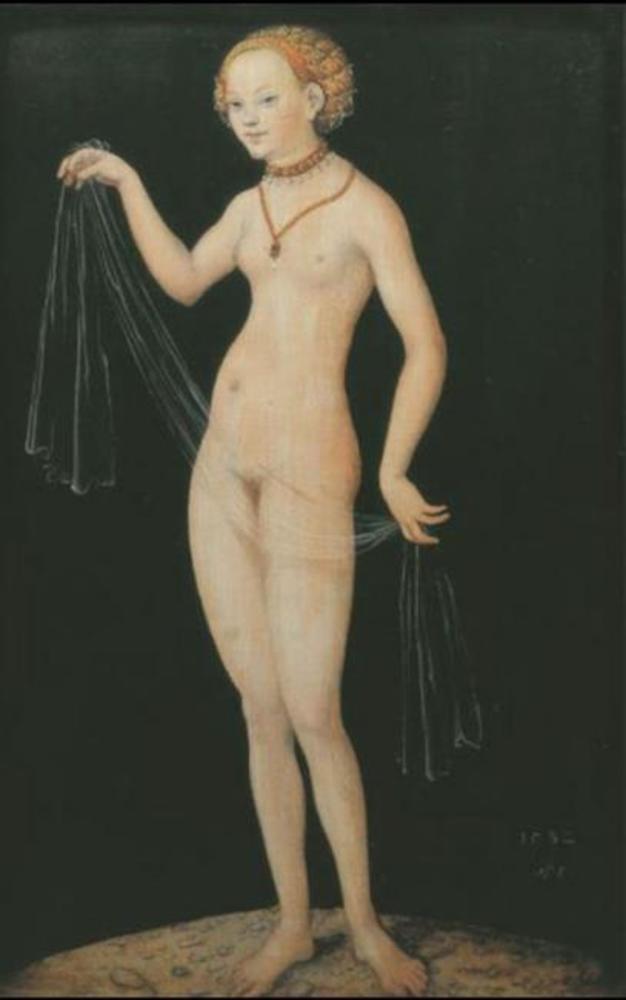
Many Renaissance painters also used male models to represent classical pagan figures or biblical figures or life activities. Michelangelo undoubtedly used many live models in Rome to festoon the ceiling of the Sistine Chapel with all those nude males lounging above the worshipers below in suggestive poses (below).
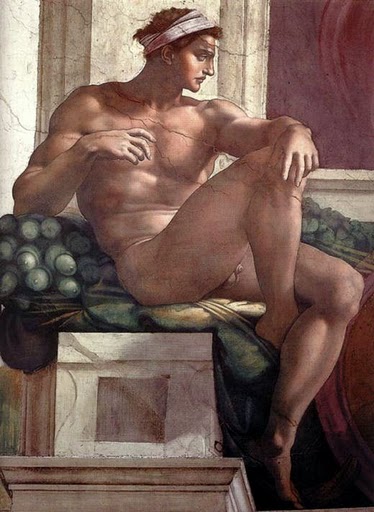
College art classes and classes in art studios continue to provide nude models for life drawings. Many of these models are professional models or dancers who know how to strike the various poses the art instructor calls for. I assume our questioner falls into this category. I understand that strict etiquette is followed in life drawing classes.
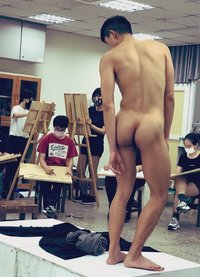
Our questioner contrasts this non-sexual use of models with strip dancers, whose purpose is precisely to arouse the patrons in order to garner good tips. Male strippers may also be professional models or dancers. Many work in other professions. But they still have to work out and practice to keep their bodies fit and their routines entertaining. In strip clubs touching the body is allowed but within limits. Even if genitals are not displayed, there is an intentional lewdness used in the gestures and movements to arouse the patrons (usually females who come to see the male strippers). So I suppose by my definition I would regard strip dancing as pornographic. But a line is not crossed from nudity to sexual activity. The dancers know when to back off. Moreover, their performances are public and are subject to local legal standards of decency.

The striptease show format is to remove one article of clothing at a time. However, it is also the case that leaving some articles of covering on the body is more erotic than total nakedness. They get down to their jockey briefs and no further. In total nakedness, what you see is what you get. In partially covered nudity there’s always more to be revealed. That’s why gradually stripping is so titillating. Groups like the Magic Men have rehearsed theme performances that also involve dance and athleticism.
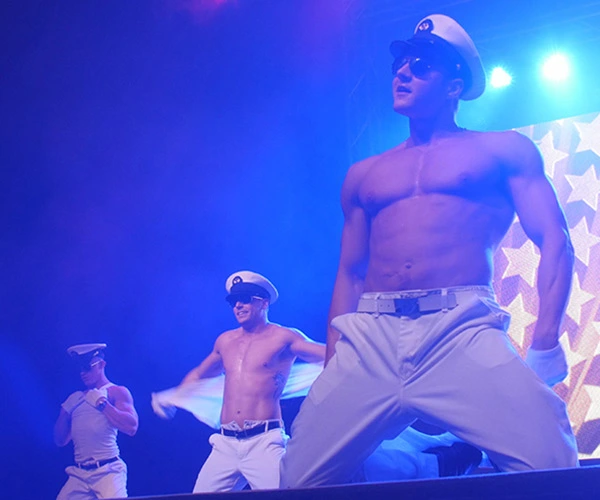
Our questioner suggests that in events like The Artful Bachelorette, the line between nudity and pornography is blurred. I had to read up on this company, which started in Australia and has expanded to a half dozen cities (so far) in the U.S. Male strippers have been a standard item in bachelorette parties. This new approach has an educational component. An art teacher instructs the women in the basics of painting a nude body and then has the professional nude model uncover himself. There is undoubtedly nervous giggling and joking. Some joking is provided by the art teacher herself (like “Don’t forget to draw his penis”) to loosen up the participants. Reviews of these events state that after a while the women get into their paintings and are interested in comparing one another’s efforts. A good time is had by all, including drinking wine or champagne (which also serves to loosen up the participants). As in art classes, there are rules of behavior, including, no photos of the model when he is naked and no touching his body.

In my research, I learned that The Artful Bachelorette isn’t the first company to come up with this idea. There are agencies in other countries, like Ireland and the UK, that provide live male models for “hen parties” for all sorts of events and in various venues.
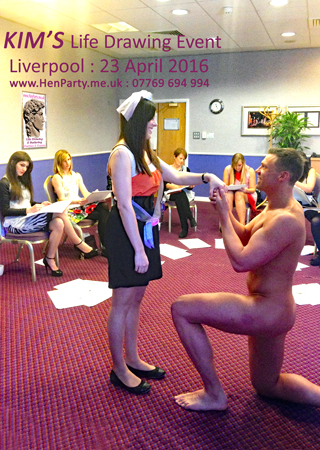
It seems to me from reports I’ve read that these parties are like art classes that are less serious about producing artistic representations than collegiate or studio art classes. Since the model, unlike the strip dancer, is not striking lewd poses or engaging in erotic movements, it doesn’t qualify as pornography. The model is not trying to arouse the women, just titillate them. But it does seem like a situation in which women are gawking and probably making lewd comments, having had their tongues loosened up with champagne or wine. The point of these parties is to have fun. So the participants are not exactly honoring and respecting the body, although maybe by the end of the session they are respectful and grateful to the model.
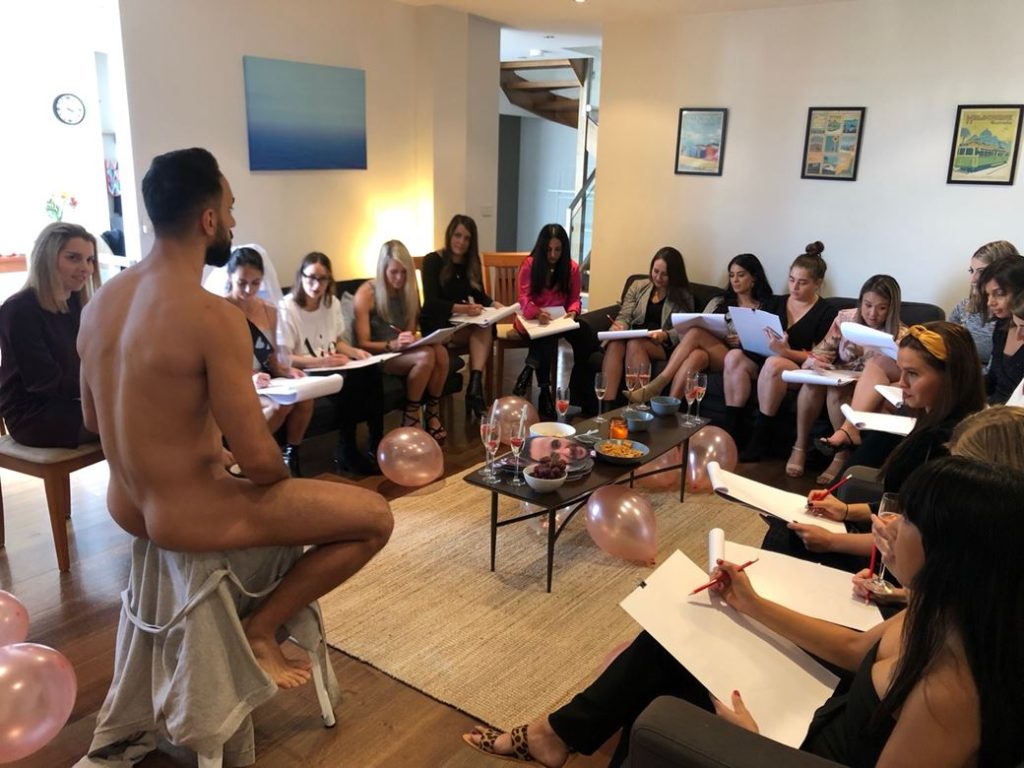
But suppose the genders were reversed and there was a bachelor party in which the men were attempting to draw a nude figure using a female life model accompanied by drinking beer, joking, and making lewd remarks. In our present age of gender sensitivities, I don’t think this would be acceptable. I think women ought to also honor and respect the nude male body of the model who poses for their art parties.
I can understand that our questioner might not want to make himself available for bachelorette or hen parties. But he might at least first make inquiries from the management about how the sessions go and what is expected of his performance as he decides whether or not to accept such gigs. There could be art parties in which the participants come to appreciate the nude body of the model and learn how artists make use of it and disassociate nudity from sex.
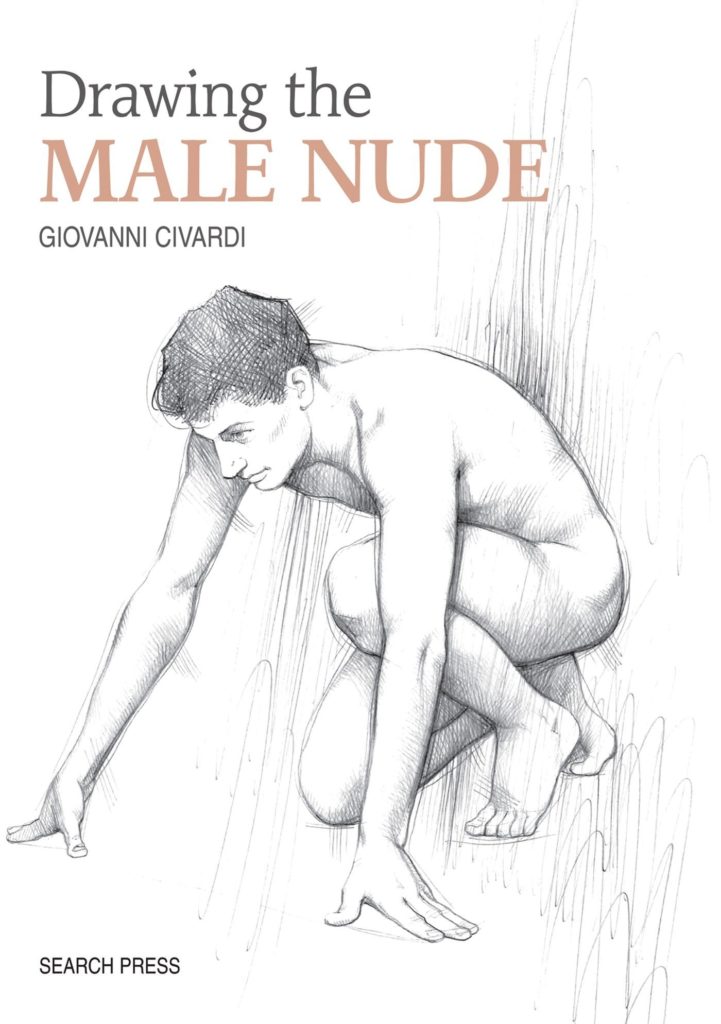
There could also be another positive outcome of these parties. Even in academic life drawing classes that are nonsexual, the model (whether male or female) is an object to be painted. At the hen parties, the participants can ask questions about the model and come to know something about him. This de-objectifies him. The model can become a subject relating to other subjects. A person emerges who is more than his body. Or perhaps we could say that the artist creates a human body that also discloses a person, a soul if you will. The following painting by Pat Kelly uses the form of a full “inspection” pose with armpits exposed and the body opened up to show what can be learned from this subject.
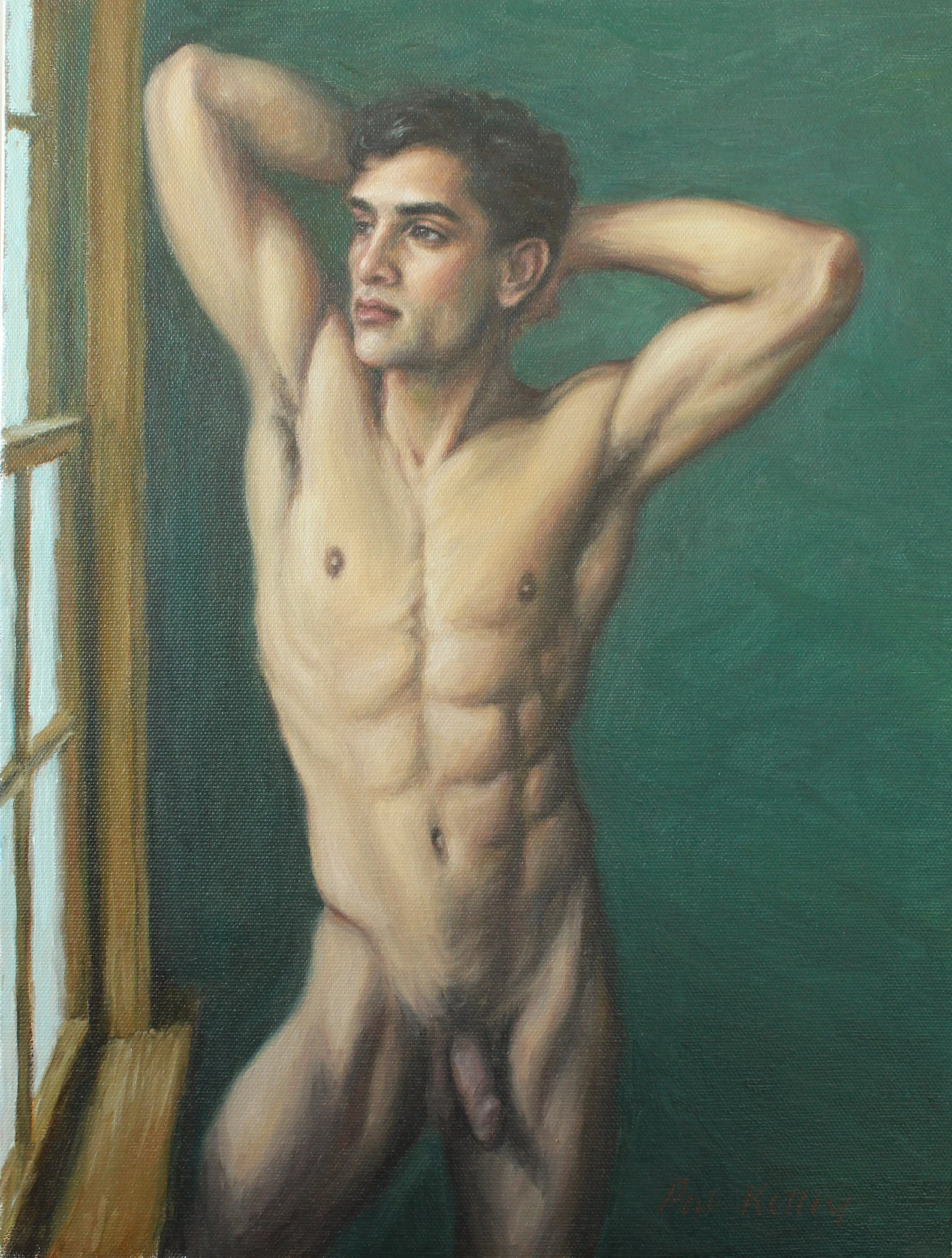
I’ve never had art lessons, but I would like to think that knowing the model as a person would enable the artist to make something of a nude portrait. I think the best nude art does that. That enables nude art to transcend pornography. The artist has created a real person who happens to be nude. The pose itself and facial expression reveal whether this person is naked and ashamed or naked and unashamed. In any event, I can see why artists want to paint nudes. Clothes do not make the person.
Pastor Frank Senn

